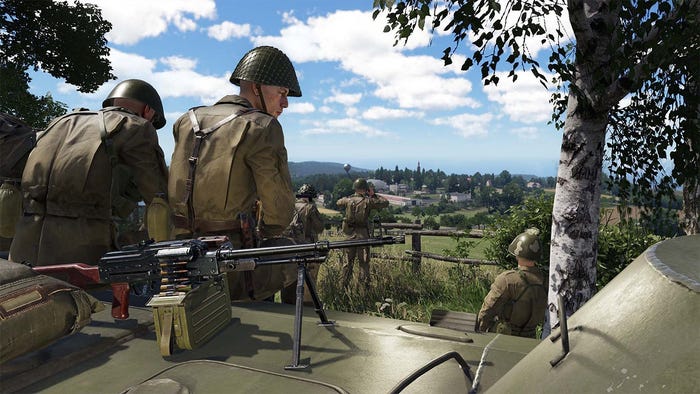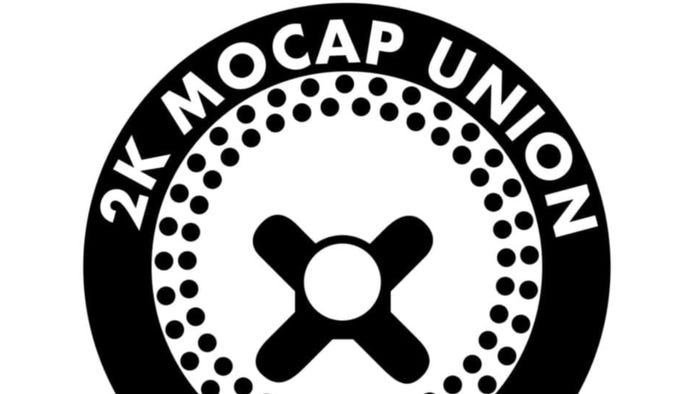Q&A: The weird, wacky success that is Goat Simulator
Coffee Stain Studios CEO Anton Westbergh explains how a game that started out as a game jam joke became a real, tangible product, and why game developers should lighten up once in a while.

Goat Simulator was released on April 1st. It's the best kind of April Fool's Day surprise: something preposterous enough to be a joke that someone has taken pains to bring into the world as a real, tangible thing that you can experience. Coffee Stain Studios' goat simulator did start as a joke, but the Swedish indie studio -- perhaps best known for its work on the Sanctum series of first-person tower defense games -- committed to the bit and made it real after an early video of the team fooling around with a prototype version of the game garnered a massive amount of interest from the internet at large. The team managed to hit their holiday release window after two months of work to get the game into a semi-playable state, and now Goat Simulator is a real product you can buy and play for ten American dollars. As of this writing, it's still in the Steam top 10, and even had been the no. 1 seller. To learn more, Gamasutra spoke with Coffee Stain Studios CEO Anton Westbergh about the genesis, trials and triumphs of the game's development. An appropriately ludicrous, edited transcript of our conversation follows.
Tell me a bit about how Goat Simulator was made, and where it came from.
Westbergh: Goat Simulator began as a crazy idea in our brainstorming sessions for finding new game projects. In January this year Coffee Stain were at the point where we had to take on something new. After working with Sanctum 2 for a very long time, and the Sanctum franchise in general for years, we were craving something fresh and exciting to work with. During the brainstorming sessions a lot of great ideas came up, but most of them were rather big projects. Since we all agreed it was about time to blow off some steam we decided that before we'd start something big, a studio game jam would be held. Goat Simulator was one of the most crazy ideas -- quirky enough to fit for a game jam -- and we believed we could get some really nice results in little time. The goal with the game jam was not necessarily to get a real game, but to blow that steam off, experiment with the Unreal Engine 3 and also educate some of our new programmers. During the jam we also played around with our ways of working and broke down all the traditional roles in the team. People were free to work with whatever they liked. We also
"Once we hit about a million views we started to realize moving on the one of the "real" projects was not the best option anymore."
had no real planning or structure for how things were added to the game, nor limitations, except the time frame. After about two weeks of jamming we had this goat roaming around a map and wrecking stuff, and we all thought it looked pretty hilarious so we uploaded a video to YouTube and it just caught fire. After the first night that video had about 100,000 views and then it just kept going. Once we hit about a million views we started to realize moving on the one of the "real" projects was not the best option anymore. We had to finish what we had started, so we announced Goat Simulator would become a real thing! From there down to the launch we spent about two more months.
Why work in Unreal Engine 3 as opposed to say, Unity?
Coffee Stain Studios has always been working with Unreal so it was natural for us. While it might have a slightly steeper learning curve, once you get into it, we think it's the best. Making Goat Simulator in roughly 2 months was a result of how efficient we can work with Unreal. Unity is probably cool for a lot of games, but we're providing realistic goat simulation, and then there's little choice in what tech to use. Epic also loves goats, and that’s probably the most important for us. [Note: Coffee Stain Studios also announced a five-year agreement with Epic Games to use Unreal Engine 3 exclusively back in 2011.]
What problems and challenges did you run into while developing it for Steam?
Goat Simulator has been developed extremely quickly, and there's been no big hiccups really. Early on we made a couple of key decisions that immensely helped us save time, though: no networked multiplayer, release only on Steam, limit ourselves to four weeks of development time (this helps, because it forced us to focus) and hold few big meetings! Also, we [let ourselves] use physics without getting it right and removed network multiplayer. No network multiplayer: Lessons learned on our Sanctum games showed us that doing a multiplayer game generally at least doubles the development time, if not more. Goat Simulator builds heavily on a lot of physics that wouldn't really do well simulated over a network, so it was really not much of a choice anyhow, but working with a single-player experience was also a great relief! Steam-Only: Sanctum 2 was developed simultaneously for PC, Xbox 360 and PlayStation 3. Something that gave us a lot of limitations and headaches. Seeing how that game did pretty awesome on Steam but pretty bad on the consoles made this an easy choice for Goat Simulator. If only Microsoft and Sony could take after Valve a bit in how to promote games on their platforms, things could've been different. 4 weeks of development time: The very limited development time frame was interesting and did actually help us out a lot. Because of this big limitation there was always a sense of urgency, but at the same time the lack of a project plan made it so that no one really felt very stressed. Few big meetings: We didn't have a lot of big meetings during the development compared to our other projects. Big meetings can often tend to become a real time killer, and also sometimes affect decision making to the worse. I think the fact that we had fewer big meetings actually ended up giving us a better product in the end. Using bugs instead of removing them: Bugs have been a feature from the start in Goat Simulator. Physics easily go haywire, and when they do, some really fun stuff can happen. Keeping nasty bugs in a game has been great, because it also helped us save a lot of development time. It’s not something I can recommend for any project, though!
How has the game been received? Do you think Coffee Stain Studios might work on a humorous game like this again, or will you turn to more serious projects?
The reception of Goat Simulator has been very interesting. The game is so different from others, that reviewers generally have seemed to find it pretty tough to give it a fair go. With this said, there's been a lot of emotion around the game. Rather few reviews have been in the medium range of scores -- Goat Simulator seems to push a lot of buttons, but has to be taken for what it is. Goat Simulator has been a great experience for the team overall, and we're definitely taking a lot of lessons with us for our future projects. Maybe we won't focus as much on execution, but more on the general idea that a game should be unique and fun?
What kind of research did you do into goat life while working on the game, and what inspired you to keep working on it?
There have been a lot of simulators lately on Steam -- Towtruck Simulator, Woodcutter Simulator -- who even plays these games? Since simulators are already so strange, we thought making something even odder would be fun! It was also a reaction to a saturated gaming industry where I think we see way too many clones and similar games. On the topic of research, yeah we did a lot of it during the startup period. Some documentaries about goats have helped us out a lot while making Goat Simulator:
Was it a worthwhile project, from a financial perspective?
Baaaaaaaaaahyees!
About the Author
You May Also Like









